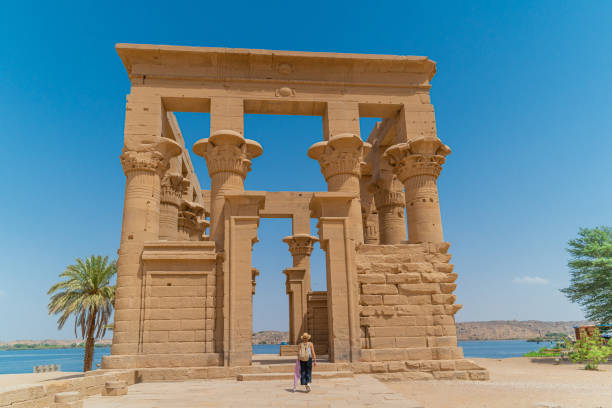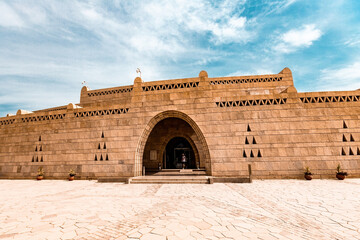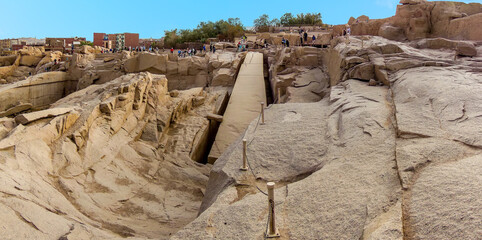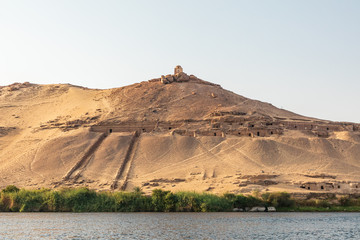Aswan, located in southern Egypt, is a city of serene beauty and rich history, offering visitors a peaceful contrast to the bustling urban centers of Cairo and Alexandria. Situated along the banks of the Nile River, just before the First Cataract, Aswan has historically served as Egypt’s southern gateway, linking the country to Nubia and the rest of Africa. The city is renowned for its picturesque landscapes, ancient monuments, and vibrant Nubian culture, making it one of Egypt’s most captivating destinations.
From the times of the Pharaohs to the present day, Aswan has been a center of commerce, culture, and strategic importance. It played a crucial role in ancient Egyptian history as the primary source of granite used to build the temples and monuments throughout the country. This article explores the historical background of Aswan and provides detailed descriptions of its top 10 tourist attractions.
The name Aswan comes from the ancient Egyptian word “Swenett,” meaning “market,” reflecting its role as a bustling trade hub between Egypt and Nubia. In antiquity, Aswan was the frontier town of ancient Egypt, guarding the southern border and controlling access to the valuable resources of Nubia, such as gold and ivory. The granite quarries near Aswan supplied the stone for many of Egypt’s iconic monuments, including obelisks and statues.
Aswan has long been associated with the god Khnum, who was believed to control the annual flooding of the Nile. The city’s strategic location also made it a key military and commercial outpost throughout Egypt’s dynastic, Greco-Roman, and Islamic periods. Today, Aswan is a tranquil city, known for its relaxed atmosphere, vibrant Nubian culture, and stunning historical sites.



The Philae Temple is one of Aswan’s most iconic landmarks, located on Agilkia Island in the Nile River. This stunning complex is dedicated to the goddess Isis and is famous for its elegant columns and intricate reliefs depicting mythological scenes. Visitors must take a short boat ride to reach the temple, which adds to the enchanting experience.


The Aswan High Dam is a modern engineering marvel that has transformed the landscape of Egypt. Stretching across the Nile, the dam controls flooding, generates hydroelectric power, and created Lake Nasser, one of the largest artificial lakes in the world. Visitors can explore the dam and learn about its impact on Egypt’s economy and environment.


The Nubian Museum in Aswan offers a fascinating insight into the history and culture of Nubia, the region that stretches south from Aswan into modern-day Sudan. The museum features a wide range of exhibits, including statues, pottery, jewelry, and ancient artifacts from the Pharaonic, Greco-Roman, and Islamic periods, as well as displays on Nubian life and traditions.

The Unfinished Obelisk is a giant obelisk that remains incomplete in its original quarry in Aswan. Had it been finished, it would have stood at around 42 meters and weighed nearly 1,200 tons, making it the largest obelisk ever attempted. Visitors can see the marks left by ancient workers and learn about the techniques used to carve these colossal monuments.


The Tombs of the Nobles are located on the west bank of the Nile, opposite Aswan, and date back to the Old and Middle Kingdoms (circa 2686–1650 BCE). These rock-cut tombs belonged to local governors, priests, and nobles who governed southern Egypt. The walls of the tombs are adorned with colorful hieroglyphs and reliefs depicting daily life, religious rituals, and the afterlife.


Kitchener’s Island, also known as the Aswan Botanical Garden, is a lush island on the Nile covered with rare and exotic plants from all over the world. The island was originally given to Lord Horatio Kitchener, a British military leader, who transformed it into a botanical paradise. Today, it serves as a peaceful retreat for visitors to stroll among palm trees, orchids, and tropical flowers.
Top 10 Tourist Attractions in Aswan
Philae Temple
Aswan High Dam
Abu Simbel Temples
Nubian Museum
Elephantine Island and the Temple of Khnum
Unfinished Obelisk
The Tombs of the Nobles
Kitchener’s Island (Aswan Botanical Garden)
Kalabsha Temple
St. Simeon Monastery
Aswan offers a unique and tranquil experience for visitors eager to explore Egypt’s ancient history, Nubian culture, and stunning natural beauty. From the monumental temples of Philae and Abu Simbel to the peaceful banks of the Nile on Elephantine Island, Aswan is a city rich in history and culture. Whether marveling at the engineering feats of the Aswan High Dam or wandering through the vibrant streets of the Nubian villages, travelers will find that Aswan is a destination where ancient and modern worlds harmoniously coexist.
©2025 Elite Travel Gate All Rights Reserved